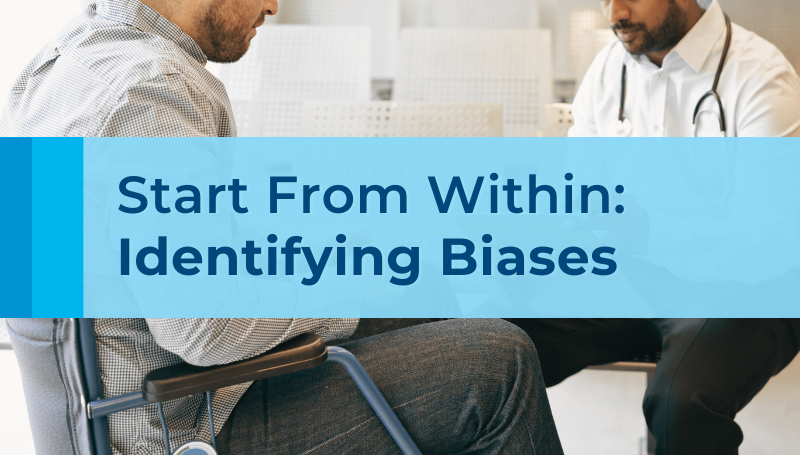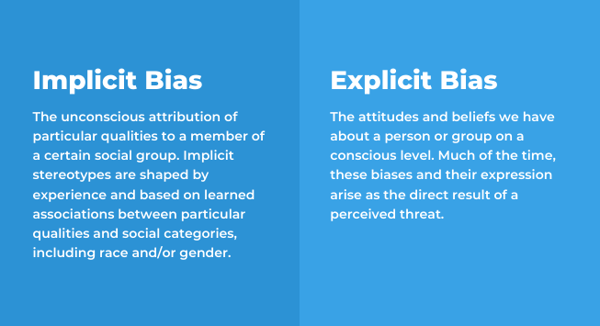Start From Within: Identify Implicit Biases & Improve Patient Outcomes

This is one in a series of blogs, Start From Within, where we’re tackling some of the ‘softer’ parts of being a doctor, ones that you didn’t learn in medical school: healthcare inequity, the elements of professionalism as a doctor, what to do when patients have a bias against you, etc.
Our mission is to make learning medicine easier. But we know it’s not just how you learn medicine—the way you apply your knowledge in clinical settings is immensely important, too. This blog series is meant to help you navigate the patient situations you face daily and improve your patient care.
How implicit bias can create disparities in your practice
Creating more empathy and compassion in your doctor-patient interactions improves quality of care and builds stronger relationships with your patients. A guiding principle of medicine is to provide healthcare focused on equity: equity of access, treatments, and outcomes. Unfortunately, there are disparities in our healthcare system that violate this principle and need to change. But each of us can be a part of the solution. A step we all can take is looking within.
.png?width=600&name=maddy%20blog%20images%20(38).png) The definition of bias
The definition of bias
We all have biases. Regardless of race, ethnicity, religion, we have been shaped by life experiences that play a role in our thoughts and decision-making. Healthcare professionals exhibit the same levels of implicit bias as the wider population. Bias becomes a problem when it results in decisions that perpetuate disparities in patient outcomes. Identifying your implicit biases is an important step toward understanding and overcoming the negative impact these biases can have on medical decision-making.
What is implicit bias?
Implicit bias is a subconscious preference for or against a group of people. While you may not think you have any bias at all, we all bring implicit bias into our daily experiences.
 Implicit vs explicit bias
Implicit vs explicit bias
So, what can you do? It starts from within. Identify your own implicit biases to give yourself the perspective to interact more equitably with your patients.
How to identify your own implicit bias
A perfect place to start is by taking Harvard’s Implicit-Association Test (IAT), which uncovers your implicit biases. These tests have been taken by millions of people over the past 20 or so years, and they’ve been validated through dozens of studies.
.png?width=600&name=maddy%20blog%20images%20(36).png) Take the IAT’s to become aware of how your brain is primed to see your patients, and how you could be making split-second decisions about their care.
Take the IAT’s to become aware of how your brain is primed to see your patients, and how you could be making split-second decisions about their care.
So, what’s next?
Ask yourself, “What about my results surprised me?” Did you learn anything about yourself that you didn't already understand?
With conscious understanding, you can unlearn your implicit biases. The end result is that your decisions create a more equitable outcome for all your patients.
Join our community of 30,000+ physicians who get regular study tips, board prep advice, and special offers on MedStudy tools.


